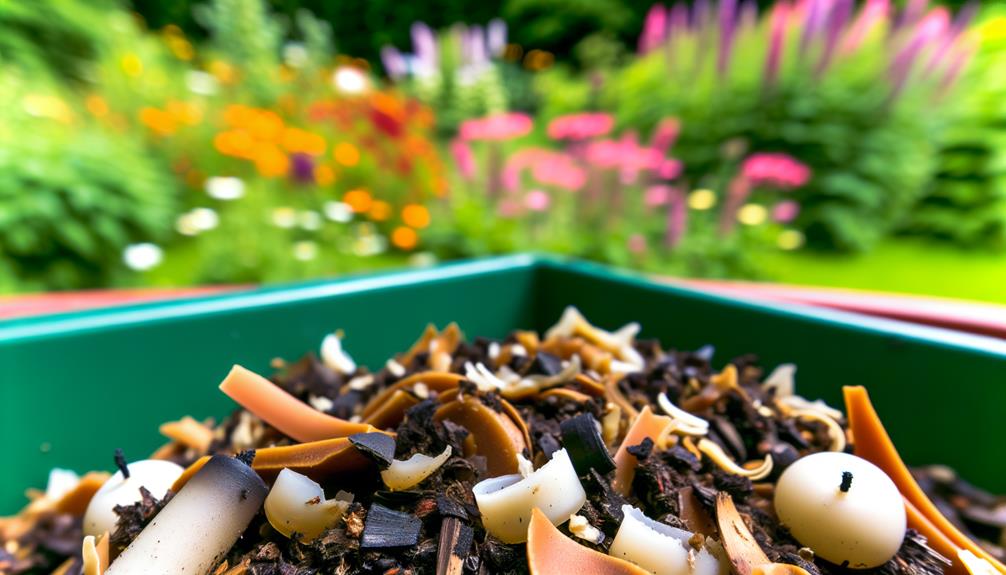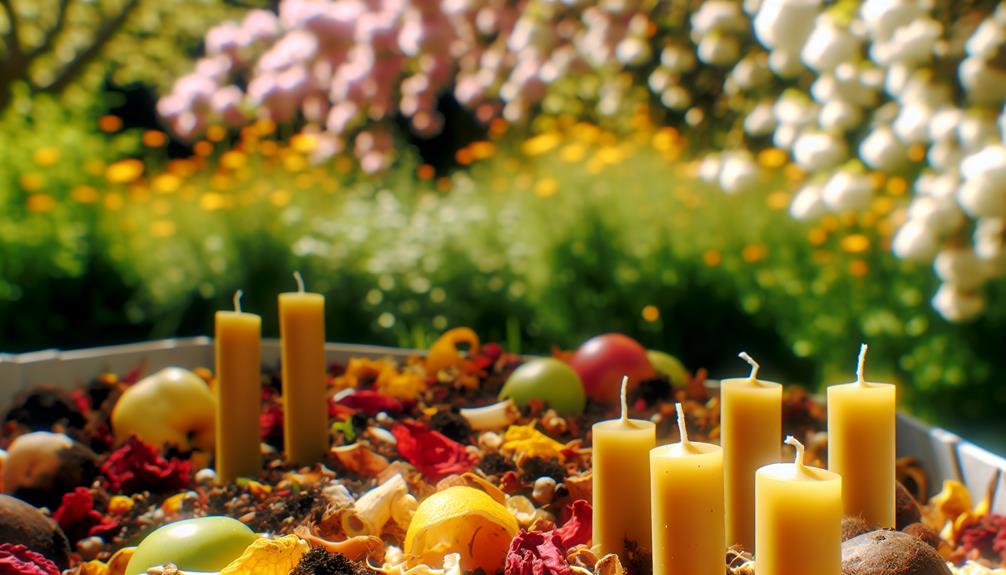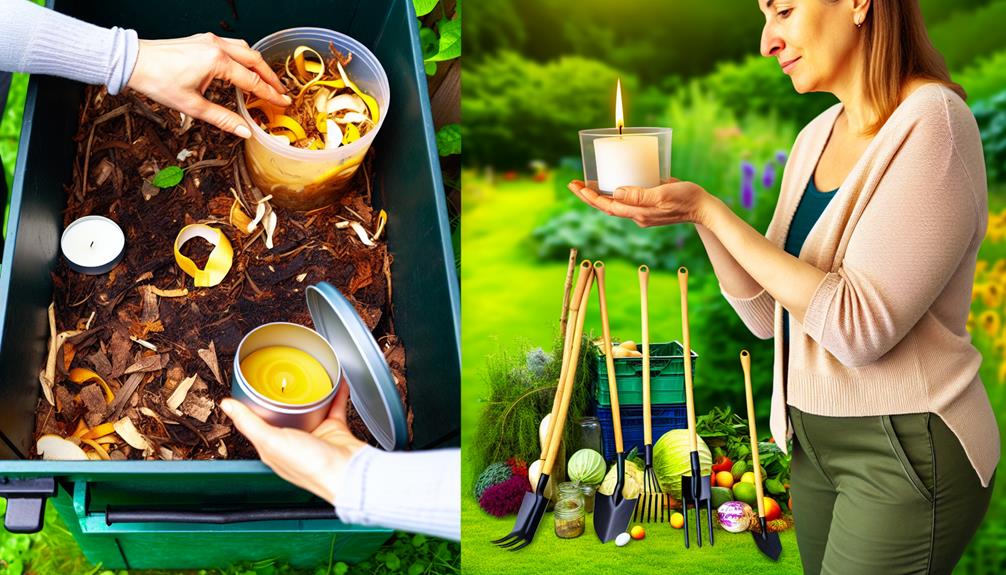

Candle wax comes in various forms, each with its own environmental impact, particularly regarding compostability. Among these, soy wax and beeswax stand out as sustainable options that can enrich compost while reducing waste.
In contrast, paraffin wax, derived from petroleum, poses significant challenges for eco-conscious consumers. As we explore the world of candle wax, the choice between compostable and non-compostable materials becomes pivotal in fostering a greener planet. Embracing eco-friendly practices not only benefits the environment but also aligns with a growing community dedicated to sustainability.
Proper disposal of melted wax is essential for maintaining cleanliness and environmental responsibility. Whether from candles or wax melts, there are effective methods to handle leftover wax without causing plumbing issues or contributing to waste. Below are guidelines on how to properly dispose of melted wax.
Hot Water Method
Microwave Method
Disposal of Wax:
Creative Reuse – Consider repurposing leftover wax:
By following these methods, you can responsibly manage melted wax while also finding creative ways to reuse it.
Candle making is an art that has been practiced for centuries, and the choice of wax plays a crucial role in determining the quality and characteristics of the final product. Different types of candle wax offer unique properties, making them suitable for various applications and preferences.
These types can help both novice and experienced candle makers select the right wax for their specific needs, whether for aesthetic appeal, scent retention, or environmental considerations.
By understanding these various types of candle wax, makers can choose the best option that aligns with their artistic vision and environmental values.
Candle wax is a common material used in candle making, but its environmental impact is a growing concern. As consumers become more aware of sustainability issues, the question of whether candle wax is biodegradable has gained attention.
This inquiry primarily focuses on the two most popular types of wax: paraffin and plant-based alternatives like soy, beeswax, and coconut wax. Understanding the biodegradability of these waxes is crucial for making informed choices that align with eco-friendly practices.
Composition and Environmental Impact: Paraffin wax is derived from petroleum, specifically as a by-product of crude oil refining. This non-renewable resource raises significant environmental concerns due to its energy-intensive production process and the fact that it does not biodegrade easily. In landfills, paraffin products can take several years to decompose, contributing to long-term waste issues.
Biodegradability: Paraffin wax is not biodegradable. Its composition of hydrocarbons means that it remains intact in the environment for an extended period, leading to pollution and waste accumulation.
Soy Wax: Soy wax is made from hydrogenated soybean oil, making it a renewable and biodegradable alternative to paraffin. It breaks down more easily in the environment compared to paraffin, contributing less to landfill waste. However, it’s essential to ensure that soy wax is 100% natural, as some products may contain additives that could affect their biodegradability.
Beeswax: Beeswax is another natural option derived from honey production. It is fully biodegradable and supports sustainable practices when sourced responsibly from beekeepers. Beeswax candles burn longer and cleaner than paraffin candles, producing fewer pollutants.
Coconut Wax: Coconut wax is extracted from coconut oil and is also biodegradable. It burns cleanly and efficiently, with a lower environmental impact compared to both paraffin and soy wax.
While paraffin wax poses significant environmental challenges due to its non-biodegradable nature, plant-based alternatives like soy, beeswax, and coconut wax offer biodegradable options that are more sustainable. Choosing these eco-friendly alternatives can help reduce one’s environmental footprint while enjoying the benefits of candlelight.
Also Read: Can You Compost Artichoke?
Paraffin wax is a versatile material primarily derived from the petroleum refining process. This colorless or white, odorless, and tasteless solid typically melts between 46°C and 68°C (115°F to 154°F) and consists of a mixture of solid straight-chain hydrocarbons with carbon chain lengths ranging from 20 to 40 atoms.
The production of paraffin wax involves several stages, including solvent extraction, dewaxing, and hydrotreating, which enhance the quality of the final product.
Paraffin wax is widely utilized across various industries due to its favorable properties:
As environmental sustainability becomes increasingly important, questions arise about whether paraffin wax is eco-friendly. A key concern is does wax decompose? The answer is that paraffin wax does not decompose naturally due to its petroleum-based origins. This leads to further inquiries such as can you compost wax? The reality is that traditional paraffin wax cannot be composted.
Many people wonder, can candle wax be composted? Unfortunately, the answer remains the same; paraffin candle wax does not break down in composting environments. This lack of biodegradability raises significant questions about its long-term environmental impact and encourages exploration into eco-friendly alternatives.
While paraffin wax remains a popular choice in numerous applications due to its beneficial properties, its sustainability challenges necessitate consideration of alternative materials that are more environmentally friendly. Understanding whether can wax be composted is crucial for making informed decisions regarding waste disposal and sustainable practices.
Beeswax, a natural wax produced by honey bees, is gaining popularity as an eco-friendly alternative to plastic wraps. As consumers become more environmentally conscious, the question arises: Is beeswax compostable? The answer is affirmative.

Beeswax products, particularly wraps, can be composted or recycled at the end of their useful life, making them a sustainable choice for reducing plastic waste. Below is a detailed exploration of the compostability of beeswax and its benefits.
Beeswax Wraps: These wraps are made from cotton fabric coated with beeswax, resin, and oils. They serve as a reusable alternative to single-use plastic wraps. At the end of their lifespan, typically 9-12 months with proper care, these wraps can be composted.
To compost beeswax wraps effectively:
Beeswax is not only a versatile material but also an environmentally responsible choice that can contribute positively to waste management and soil health when composted properly.
Also Read: Can You Compost Ash?
Soy wax is recognized as an eco-friendly and biodegradable material, making it an excellent choice for composting. Sourced from soybeans, soy wax is fully compostable, providing a sustainable method for disposing of candle remnants. In contrast to paraffin wax, which can take years to decompose, soy wax breaks down more rapidly, thereby minimizing your environmental impact.
To effectively compost soy wax, it is advisable to break it into smaller pieces. This practice accelerates the decomposition process within your compost pile, promoting a more sustainable lifestyle and reducing waste.
Additionally, maintaining optimal compost conditions—such as appropriate temperature and moisture levels—will enhance the breakdown of the wax. By opting to compost soy wax, you contribute to responsible waste management and engage with a community that values environmental consciousness.
Reusing leftover candle wax can transform discarded materials into practical and innovative solutions. Instead of simply composting the remnants, consider melting down the wax to create new candles. This allows for customization with various scents and colors, making each candle uniquely yours.
Moreover, candle wax serves as an effective natural lubricant for sticky drawers, zippers, or squeaky hinges. For those who enjoy outdoor activities, combining melted wax with sawdust or dryer lint can produce fire starters—ideal for camping trips.
Alternatively, donating leftover wax to local organizations for art projects can foster creativity while reducing waste. By finding ways to repurpose candle wax, you not only minimize waste but also enhance resourcefulness within your community.
Repurposing leftover candle wax into useful items can significantly reduce waste while adding a personal touch to everyday objects. One option is to melt down the leftover candles and create new ones with unique fragrances and colors. Additionally, candle wax can be utilized as a natural lubricant for mechanisms that tend to stick.
For outdoor enthusiasts, making fire starters by combining melted wax with cotton balls or dryer lint is a practical solution. You might also consider donating leftover candle wax to local organizations for educational or artistic endeavors. Engaging in these repurposing activities not only helps decrease waste but also extends the functional life of the wax in both practical and creative ways.
| Repurposing Ideas | Materials Needed | Benefits |
|---|---|---|
| New Candles | Leftover wax, new wicks | Custom scents/colors |
| Lubricant | Candle wax | Fix sticky drawers/zippers |
| Fire Starters | Wax, cotton balls/dryer lint | Handy for camping trips |
| Art Projects | Leftover wax, art supplies | Support local organizations |
Also Read: Can You Compost Almond Shell?
The proper disposal of waste is crucial for maintaining environmental health and sustainability. As urbanization and population growth continue to increase waste generation, effective waste management strategies become essential.

Various disposal methods exist, each with its own benefits and drawbacks. Understanding these methods can help individuals and communities make informed decisions about waste management, ultimately reducing pollution and conserving resources.
Repurposing candle wax scraps not only reduces waste but also offers a creative way to make new candles or other wax products at home. Instead of composting, recycling wax scraps lets you breathe new life into remnants.
Melt the wax carefully, ensuring you handle it safely to avoid burns, and pour it into molds to create fresh candles. Remember, don’t pour melted wax down drains—it can cause plumbing issues.
If home recycling isn’t your thing, check if local organizations can repurpose the wax scraps. By recycling, you’re not just managing waste; you’re joining a community of eco-conscious individuals who care about reducing their environmental footprint.
For an eco-friendly alternative, try composting 100% natural beeswax or soy-based candle wax to minimize your environmental impact. These types of wax are compostable and break down easily, especially when you chop them into smaller pieces.
Make sure your wax is unscented to avoid introducing harmful chemicals into your compost pile. Proper disposal methods are essential to reducing waste and supporting a greener planet.
Here’s a quick guide to help you:
| Wax Type | Compostable | Key Tips |
|---|---|---|
| Beeswax | Yes | Make sure it’s 100% natural |
| Soy-based wax | Yes | Break into smaller pieces |
| Paraffin wax | No | Avoid composting |
| Scented wax | No | May contain harmful chemicals |
Composting candle wax, especially biodegradable options like beeswax and soy wax, greatly reduces waste and lessens environmental impact. By choosing these biodegradable and compostable alternatives to paraffin wax, you’re making a powerful choice for the environment.
Composting candle wax helps divert waste from landfills, enriching your compost pile instead of contributing to pollution. But remember, proper disposal is crucial. Avoid composting scented candle wax because it may contain chemicals harmful to your composting process. Stick to natural, unscented waxes to guarantee your soil stays healthy and thriving.
Every small step, like composting candle wax, brings us closer to a sustainable future. Let’s embrace these eco-friendly habits together and make a real difference!
Yes, candle wax will decompose, but it depends on the type. Soy wax and beeswax will break down in compost. Paraffin and synthetic waxes won’t. Always check labels and avoid scented wax to guarantee eco-friendly composting.
You shouldn’t put candle wax in the green bin. Candle wax often contains additives or synthetic materials that aren’t suitable for composting. Properly disposing of it in the trash helps keep our compost clean and effective.
To properly dispose of hot candle wax, let it cool and solidify first. Scrape out the excess and toss it in the trash. Remember, don’t pour it down the drain to keep your plumbing safe.
Composting candle wax is a practical way to reduce waste and support sustainability. Beeswax and soy wax are both compostable, provided they are uncolored and unscented, allowing them to decompose effectively in a compost pile. In contrast, paraffin wax does not decompose and should be disposed of properly to avoid environmental harm.
By choosing to compost these biodegradable waxes, you contribute positively to soil health while minimizing your ecological footprint. Embracing these eco-friendly practices fosters a sense of community dedicated to environmental responsibility.
